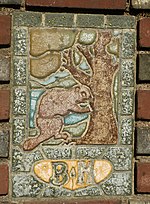Edgewood Park, New Haven
Parks in New Haven, Connecticut
Edgewood Park is a public park located in City of New Haven, Connecticut, United States, between the Edgewood and Westville neighborhoods of the city. The park is over 120 acres along the West River, with walking trails by ponds and wetlands and a wetlands viewing platform. Park amenities include a gazebo, dog run, playground, skate park, tennis courts, and a basketball court. The park also features memorials for the Spanish–American War and the Holocaust.
Excerpt from the Wikipedia article Edgewood Park, New Haven (License: CC BY-SA 3.0, Authors).Edgewood Park, New Haven
Yale Avenue, New Haven
Geographical coordinates (GPS) Address Nearby Places Show on map
Geographical coordinates (GPS)
| Latitude | Longitude |
|---|---|
| N 41.324 ° | E -72.958 ° |
Address
Yale Avenue
06515 New Haven
Connecticut, United States
Open on Google Maps




